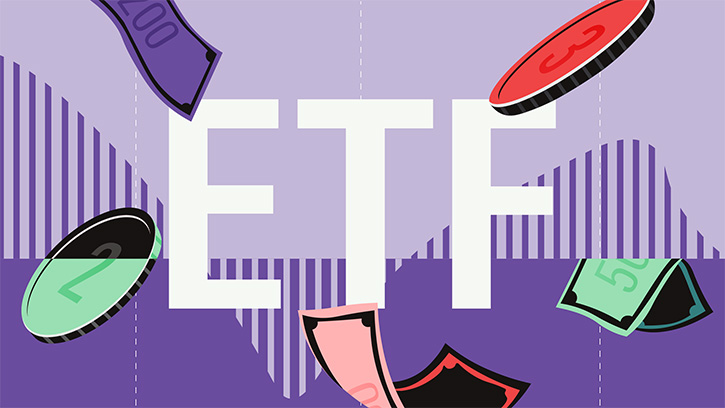The previous investing lesson looked at ways to make a portfolio more aggressive; today, we're looking at the flipside and discussing how you can pull your portfolio back a touch and make it more conservative.
Sometimes your investment portfolio can use a little conservatism. Perhaps you overdosed on a hot sector and suffered a hangover when it cooled off or maybe your portfolio just doesn't need to be very aggressive for you to meet your goals.
This lesson offers various solutions for how to dull an edgy portfolio--at least a little bit.
Are you being too aggressive?
How aggressive you should be with your investments depends on three
things:
1. Your investment goal, or how much money you'll need;
2. Your investment horizon, or how long you plan to invest for the goal;
3. Your ability to handle volatility.
Let's say you have a £750,000 portfolio that's invested 30% in bonds, 45% in large-cap stocks, 15% in mid-/small-cap stocks, and 10% in foreign stocks. You plan to add £1,000 per month to your portfolio. You'll invest for 15 years and, when all is said and done, you want £1,000,000 in a lump sum.
Your portfolio seems to be fairly well diversified and you've committed to pound-cost averaging over a long timeframe. But are you too aggressive? If you feel that your portfolio stands a strong chance of achieving your long-term goals--and an online asset allocator tool can help you determine this--or is far more volatile than you thought, you may want to consider ways to make your portfolio more conservative so as to reduce volatility.
Alter your asset mix
You can do plenty of things to damp your volatility. The most
significant move: Reducing your equity investments and increasing your
position in cash and bonds.
Many financial professionals argue that your blend of cash, stocks, and bonds contributes more to your portfolio's return and volatility than what investment styles you practice, what sectors you have exposure to, and what individual securities you choose.
While we believe all of these factors play important roles in your volatility and return, we agree: Asset allocation is huge. And the less of your portfolio you have in stocks and the more you have in bonds and cash, the more sedate your portfolio's performance will be.
Restrain your bond mix
In addition to altering your asset mix, you can curtail the volatility
in specific asset groups, too. For instance, many portfolios include
intermediate-term bonds at their core. To damp the volatility of an
intermediate-term-bond portfolio, consider adding a short-term bond fund
to your mix. Because the maturity dates of short-term bonds are nearer
than those of intermediate-term bonds, short-term bonds tend to be less
volatile. They often yield less, as well. Finally, they usually gain
less than intermediate-term bonds when interest rates fall, but lose
less when rates rise.
Many online financial web sites offer screening tools, such as Morningstar's Fund Screener offer screening tools that are a good starting point for ideas about conservative bond funds. Additionally, analyst recommendations, or picks, are a great place to begin, too.
Subdue your equity mix
Lessen your portfolio's volatility by exploring the following options
among UK stocks.
Very large companies: Some studies suggest that, over very long time periods, smaller-company stocks return more than larger-company stocks. That's because smaller companies are usually growing faster than larger companies, and stock prices (and thereby returns) usually keep pace with growth. The faster the growth, says theory, the higher the return.
But the faster the growth and the smaller the company, the more volatile the stock, too. So if curtailing volatility is your goal, focus the UK stock portion of your portfolio on the very largest companies. They may not have the same growth potential as smaller companies, but they don't have the same volatility, either.
If you are looking for a good large-company stock fund, you can find ideas by using our online Fund Screener or browsing analyst recommendations.
Dividend-paying stocks: Dividend-paying stocks are often called "buffers." That's because their dividends provide a cushion in a difficult market. Although a company's stock price may fall, it will usually pay its dividend. And that dividend props up total return. Let's take an example: A hypothetical cement company's stock price falls from £10 per share to £9.50 per share in one year. That's a 5% loss. However, the company pays a £0.70 per-share dividend each year. At the end of the year, shareholders have a £9.50 share price and a £0.70 dividend. So they haven't really endured a 5% loss. It's really a gain, thanks to the dividend. Dividends won't always turn losses into gains but they can curtail volatility.
Reasonably priced stocks: Companies whose stocks trade at high prices relative to their earnings, their sales, or their cash flows harbour what's called "price risk." In such cases, investors have high expectations about the futures of these companies, and are therefore willing to pay a premium for the stock. If the earnings, sales, or cash flows of these companies don't live up to expectations, however, their stock prices can plummet. To avoid such price dives, stick with companies whose stocks are trading at moderate prices relative to their earnings, sales, and/or cash flows.
Tone down your foreign mix
If you've been aggressive with your foreign mix, you've most likely been
drawn to mid- and small-company foreign stocks, or emerging-markets
stocks. Though both offer the promise of big returns, both are very
volatile.
To curtail volatility in your foreign position, focus on large international companies that are domiciled in developed markets. They may not have the same growth potential as smaller companies or emerging-markets stocks, but they don't have the same volatility, either. Again, you can find ideas by using our online Fund Screener.
Test drive before you buy
Before deciding that you want to add dividend-paying stocks,
developed-markets stocks, or short-term bond funds to your portfolio,
find out how these new choices would work with and affect your current
mix.
Morningstar's free Portfolio Manager tool can help you visualise what impact adding certain assets or asjusting asset weightings will have on the overall look and feel of your portfolio. Once you see all of the holdings for your "conservative" portfolio, answer a few questions:
1. Will you still be able to meet your goal with this portfolio?
2. How much less volatile is this portfolio?
You may be surprised by what you find. You may see, for example, that you're becoming too conservative or, conversely, that the changes you want to make aren't going to make much of a difference as far as your future returns or future volatility are concerned. Or you may find that you've built a better portfolio for your goal.
For more investing classroom lessons on equities, bonds, funds and portfolio management, check out our Learning Centre.























